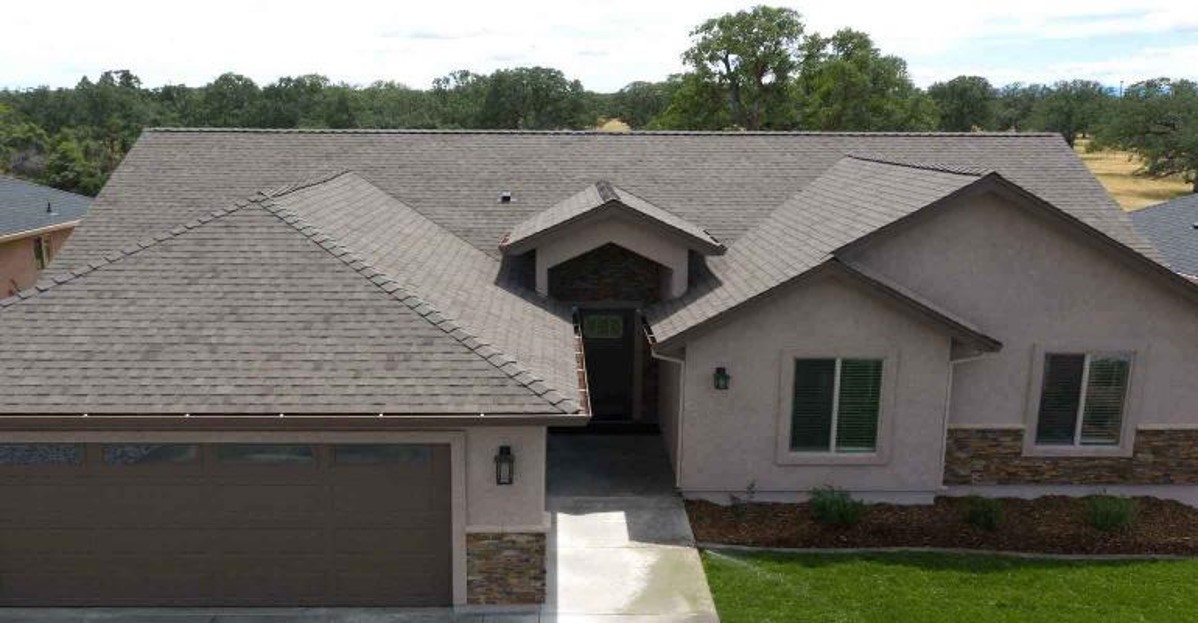

Customers increasingly seek environmentally friendly, green options for their housing project needs. Learn why asphalt shingles are a key component of creating an energy-efficient building envelope, and how they can make a difference in your roofing jobs.
Reduction of energy use in the home is a worthy yet complex goal. Homes optimized for reduced energy consumption require a tight “building envelope,” consisting of components such as the roof, insulation, ventilation, windows, siding and even the foundation.
The specific benefits of installing a cool roof vary by individual home. They also largely depend on the efficiency of the building envelope and external factors, such as shade from trees. The California Energy Commission provides needed leadership for sustainable building practices and reduction of energy use through building-material technology. This organization offers a comprehensive assessment of products that go into a home, such as the cement used in the foundation, wall type, specific air conditioning units installed and landscaping.
Asphalt shingles are only one part of a home’s energy-efficient building envelope, but they are an important component. According to the Asphalt Roofing Manufacturers Association (ARMA), the anticipated benefits of a cool roof that reflects the sun’s radiant heat include:
Increased energy efficiencyImproved comfortReduced energy billsReduced capital costsLonger roof life
When a homeowner seeks to improve a structure’s energy efficiency, it’s logical that they consider upgrades to the part of a building closest to the sun—the roof. Asphalt shingles serve as one of the first lines of defense when it comes to mitigating the heating impact of the sun. Let’s explore key critical building materials more closely.

Construction of a Cool Roof Shingle
A cool roof shingle begins with the granules manufacturers incorporate into their products. First, hard igneous rock is coated in a colored clay silicate mixture, then covered in a durable ceramic to increase durability. These granules serve a dual purpose:
The color added to the granules gives asphalt shingles their specific aesthetic.The granules help prevent ultraviolet rays from damaging the asphalt.UV rays can make the asphalt brittle through repeated expansion and contraction when temperatures rise and fall, heating and cooling the shingle.
Color Considerations
Whether we’re talking about cars, clothing or roofing, it’s known that darker colors absorb more of the sun’s heat-producing rays while lighter colors absorb less. The same principle holds for asphalt shingles. Lighter-colored shingles (white and tans) naturally reflect more rays than darker shingles (black and browns).

Homeowners desiring shingles in darker shades do have cool roof options, though. For example, Cool Black shingles, developed by PABCO Roofing Products, are up to four times more reflective than comparable standard-colored granules. In addition, these shingles are one of the darkest blacks in the reflective spectrum, according to the Cool Roof Rating Council. This nonprofit organization develops fair, accurate and credible methods for evaluating and labeling the radiative properties of roofing and exterior wall products. This council is also the only accepted certification body for the state of California.
The Solar Reflective Index
The Solar Reflective Index (SRI), a measurement tool developed by the roofing industry, is based on a combination of two heat-related factors:
Reflectance: a shingle’s ability to reflect the sun’s heat-generating rays into the atmosphere before heat is createdEmittance: a shingle’s ability to release absorbed heat back into the atmosphere
The SRI takes into account the combination of these two factors and provides insight into a shingle’s cooling capabilities. For more context: As part of a prescriptive compliance approach through Title 24 in the California Energy Code, steep slope roofs should have a solar reflectance of .20 and a thermal emittance of .75 in the identified California Climate Zones. These reflectance and emittance ratings are obtained through testing of shingles in accordance with the ANSI/CRRC S100 Standard Test Method.
Helping homeowners achieve greater energy efficiencies in their homes is a lofty, complicated task. However, new cool roof technologies and expert installations, as part of a holistic approach to the building envelope, can play a role in achieving energy-efficiency goals. To that end, new asphalt shingle technologies with reflective properties—particularly those verified by the evaluations of independent organizations—provide new choices to homeowners seeking options to improve the energy efficiency of their homes.
SOURCE: Roofing & Exteriors

